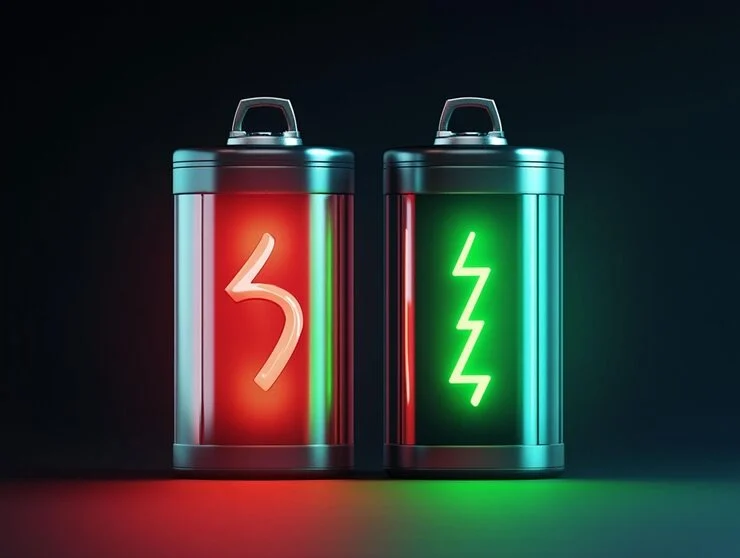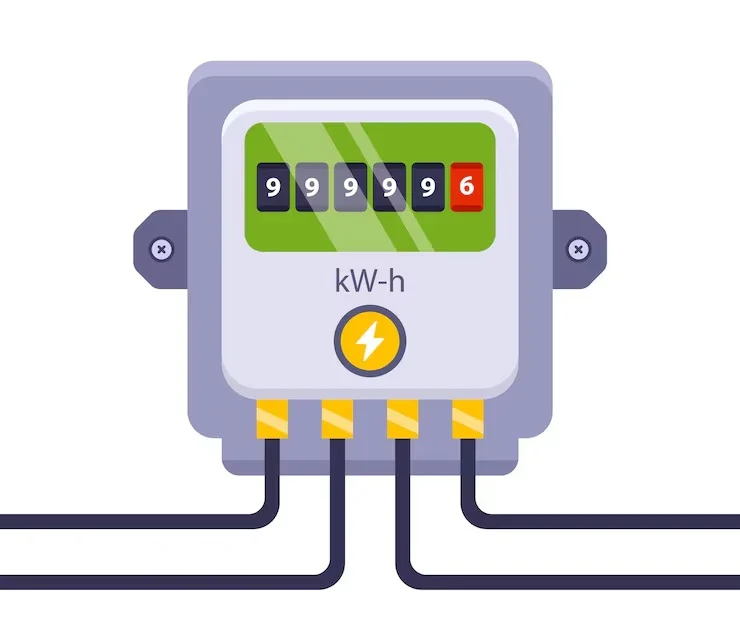Nowadays, managing power generation has been deemed more critical than ever, first by way of reducing carbon footprint and second by cutting down electricity bills. One of the factors most confuses many laypeople is the difference between power and energy-kilowatt or kW, and kilowatt-hour or kWh. Once you understand these basic concepts, a whole lot will change about your view of energy consumption-payment can be cut, and energy can be used much more efficiently.
So, what is the real difference between kW vs. kWh, and why does it matter for your electric bill? This article explains these terms in the simplest language, looks at the matter from a pricing perspective, and offers a simple trick to slash your energy bills.

What does kW mean?
Before dealing with the circumstances of kWh, first, let’s discuss what kW means.
A Kilowatt or kW refers to a power unit. In this case, power refers to the rate at which energy is being used or generated. A kilowatt of power is equal to 1,000 watts. Power is instantaneous; measuring speed is a good example. The faster the speed, the more power.
For example:
- A 1,000-watt microwave uses 1 kW of power at full load.
- A 2,000-watt air conditioner uses 2 kW of power while in operation.
Real-Life Example:
Your 1 kW space heater is using energy at the rate of 1,000 watt-hours. The kW value really tells you how much energy the electric heater uses every second of its operation.
Simply put, kW explains how fast the appliance consumes electricity.
What is kWh?
Now let’s cut to the second criterion: the naming of the electric meter-kilowatt-hour (kWh).
kWh is a unit of energy, and it measures how much energy was used in a given period. It must be observed that kWh is not an energy-using rate but rather the amount of energy consumed.
To put it otherwise:
When you say 1 kWh of energy is used, it means an energy usage of 1,000 watts or 1 kW for 1 hour.
For example:
A 2-kW heater running for 3 hours needs 6 kWh of energy.
A 500-watt fan running for 4 hours will require 2 kWh of energy.
A Real-World Example:
If you run your 1 kW microwave oven for 1 hour, then it will consume 1 kWh of energy. The kWh figure illustrates the rate at which energy has been consumed by your microwave during that period and is passed as a charge to you on your energy bill.
The Basic Difference Between kW and kWh
Now that we have looked at the meaning of both terms, let’s take a closer look at the difference between kW and kWh:
| Term | What It Measures | Unit Type | Example |
| kW | Power (rate of energy use) | Instantaneous measurement | A 2kW air conditioner running for 1 hour |
| kWh | Energy (total consumption) | Measurement over time | Using a 2kW air conditioner for 3 hours = 6 kWh |
While kW is a rate of power consumption, kWh refers to the amount of energy consumed in a specified period.
Analogy
Think of it like a car:
kW measures speed (how fast the car is going, in miles per hour).
kWh measures distance (how far the car has traveled in a given time).
In stating another way:
kW is a measure of how fast you are using electricity, while kWh measures how much electricity you used in total.
Why It Matters: kW vs. kWh?
A good understanding of kW vs. kWh is more than being a statement of fact that one can use-it is a key to controlling energy costs. Why? Because the utility company is going to charge for kWh, but not for the power you use at a given moment in time. It means that the emphasis should be on lowering the overall energy consumption (in terms of kWh), not just using low-power devices (kW).
For example:
A 2-kW heater running for five hours will consume 10 kWh of energy.
A 0.5 kW fan running for 20 hours will consume 10 kWh of energy.
An hours’ worth of power is used by a heater; there is less power used in an hour of use by a fan, but the latter runs much longer. The energy consumed is the same for both, but from the usage pattern, it seems that the cost will differ.
Main takeaway
kWh = Your Energy Bill
kW = An Instantaneous Power Usage
Another Simple Trick for Reducing Your Energy Bills
Now that you have the basic difference between kW and kWh down pat, let us head into the simple trick that can begin to save whatever money you have left in your pocket.
Focus on Reducing Time, Not Just Power Consumption
One major mistake that most people make is to look at the wattage of appliances simply and think of the more power-consuming ones, such as air conditioners or space heaters, while forgetting how long these appliances run for. The longer the device runs, the more total kWh you will be using, and this is actually what you pay for.
The Extended Step-By-Step Guide to Saving Money on Your Energy Bill:
1. Auditing Your Appliances
Get the kW of all your appliances.
Track the usage hours of each appliance every day.
2. Find High Energy Consumers
Multiply the kw by the number of hours the device is turned on.
The highest kWh-consuming devices are those you want to focus on for energy savings.
3. Reduce Usage Time
Is there any way you can cut down on the time you use some appliances? Limiting their use to just half an hour a day can start adding up to real savings in the long term.
Instead of running that dryer for a full two hours, just run it for 90 minutes.
4. Smart Solutions
Install smart plugs or timers on appliances to configure their operating hours. Some smart appliances enable you to monitor energy consumption, which provides a real-time view of your usage.
5. Choose to Retrofit for Energy-Efficiency
Look at replacing very high-power rating (kW) appliances with lower power rating, but energy-efficient ones. Newer appliances, especially those with an Energy Star label, could be your single largest investment to lower power consumption and energy usage in the long run.
Bonus Tip: Keep Your Peak Demand Charges in Mind
In some states or utility plans, customers are also billed according to their peak power demand (kW) during set periods rather than just the total energy use (kWh). This is especially common among commercial consumers, but it will also have implications for residential customers under time-of-use or demand pricing.
By lowering the simultaneous operation of high-power-consuming devices (something like the operation of the oven, washing machine, and AC all at the same time), you will help to reduce your peak kW and hence avoid additional charges, effectively optimizing your energy bill further.
For example, if your peak demand coincides with the hottest hours of the day, think about shifting some energy-intensive activities to evening or early morning hours, in which the grid is less stressed and prices are likely to be lower.
A Real-Life Comparison of Two Households
To better explain how knowledge of kW vs. kWh can help save money, let us give two fictional households and see how their energy habits impact their bills.
Household A:
Heater: 2kW for 3 hrs.=6kWh
Lights: 10 bulbs (0.1kW each) x 6 hrs. = 6 kWh
Daily Total Consumption: 12 kWh
Household B:
Heater: 2kW for 1.5 hrs.=3 kWh
LED lights: 5 bulbs (0.02kW each) × 6 hours = 0.6 kWh
Daily Total Consumption: 3.6 kWh
Cost breakup ($0.15 per kWh):
Household A: 12 kWh × 30 days × $0.15 = $54
Household B: 3.6 kWh × 30 days × $0.15 = $16.20
Savings: Household B saves $37.80 every month simply by reducing heating time and using energy-efficient lamps.

Common Misconceptions about kW vs kg
Myth #1: Higher kW devices always cost more to run.
Truth: It depends on how long you use them. A high-power device running for a short time might use less energy than a low-power device running for hours.
Myth #2: Appliances on standby don’t consume power.
Truth: Many devices still draw standby power. Unplugging them can reduce waste.
Myth #3: Using low-wattage devices means low energy bills.
Truth: Long usage times can still result in high kWh consumption.
Conclusion
Understanding the difference between kW and kWh is a prerequisite to having effective control over your electricity consumption. By observing the power rate (kW) and time of application (resulting kWh), one can then determine the precise time and manner for energy usage that suits him/her. In doing so, they can then apply the knowledge-based power consumption so as to reduce, if not altogether eliminate, their electricity bills and eventually lessen their carbon impact on the environment.
By these tips in hand, your path to energy control and actual savings will be enhanced each month. Next time, when you skim through your energy bill, it won’t be difficult for you to pinpoint your expenses and the cuts needed in costs.


